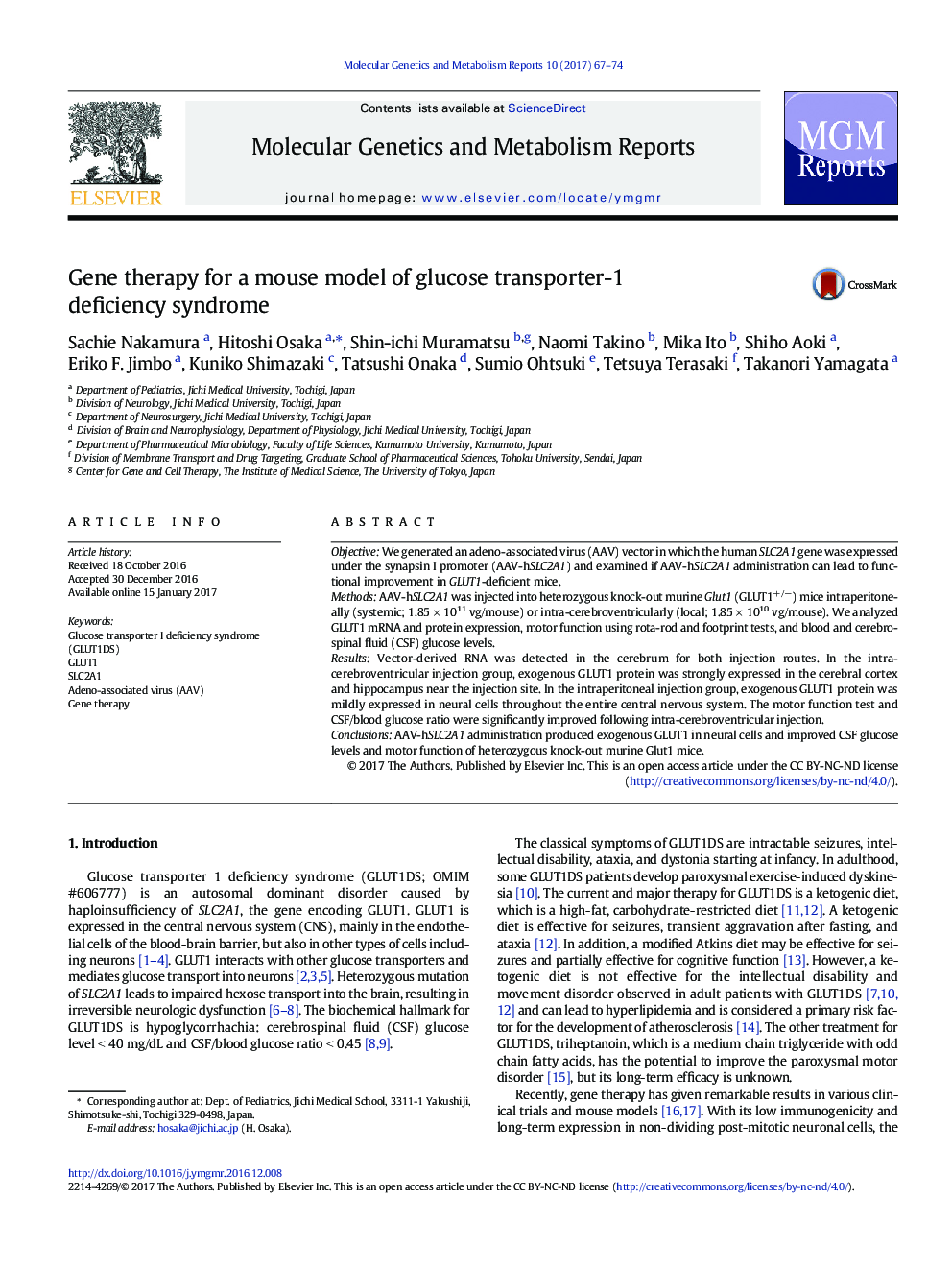| کد مقاله | کد نشریه | سال انتشار | مقاله انگلیسی | نسخه تمام متن |
|---|---|---|---|---|
| 5518579 | 1543976 | 2017 | 8 صفحه PDF | دانلود رایگان |
ObjectiveWe generated an adeno-associated virus (AAV) vector in which the human SLC2A1 gene was expressed under the synapsin I promoter (AAV-hSLC2A1) and examined if AAV-hSLC2A1 administration can lead to functional improvement in GLUT1-deficient mice.MethodsAAV-hSLC2A1 was injected into heterozygous knock-out murine Glut1 (GLUT1+/â) mice intraperitoneally (systemic; 1.85Â ÃÂ 1011Â vg/mouse) or intra-cerebroventricularly (local; 1.85Â ÃÂ 1010Â vg/mouse). We analyzed GLUT1 mRNA and protein expression, motor function using rota-rod and footprint tests, and blood and cerebrospinal fluid (CSF) glucose levels.ResultsVector-derived RNA was detected in the cerebrum for both injection routes. In the intra-cerebroventricular injection group, exogenous GLUT1 protein was strongly expressed in the cerebral cortex and hippocampus near the injection site. In the intraperitoneal injection group, exogenous GLUT1 protein was mildly expressed in neural cells throughout the entire central nervous system. The motor function test and CSF/blood glucose ratio were significantly improved following intra-cerebroventricular injection.ConclusionsAAV-hSLC2A1 administration produced exogenous GLUT1 in neural cells and improved CSF glucose levels and motor function of heterozygous knock-out murine Glut1 mice.
Journal: Molecular Genetics and Metabolism Reports - Volume 10, March 2017, Pages 67-74
